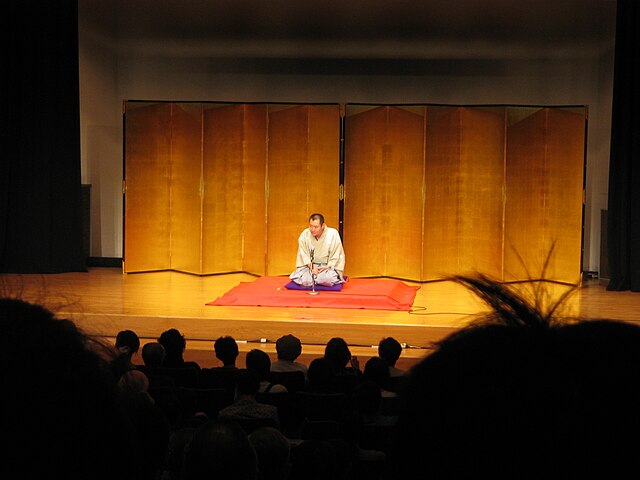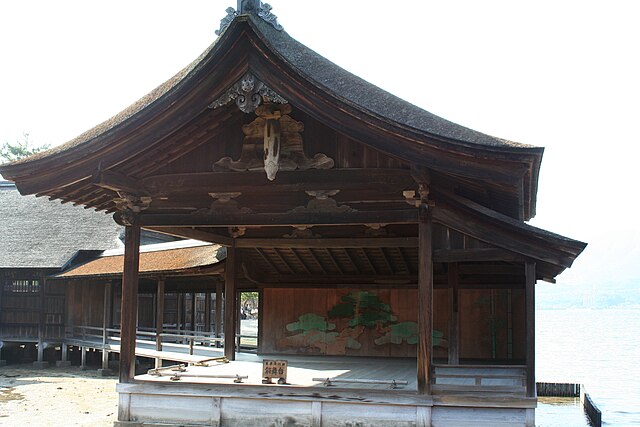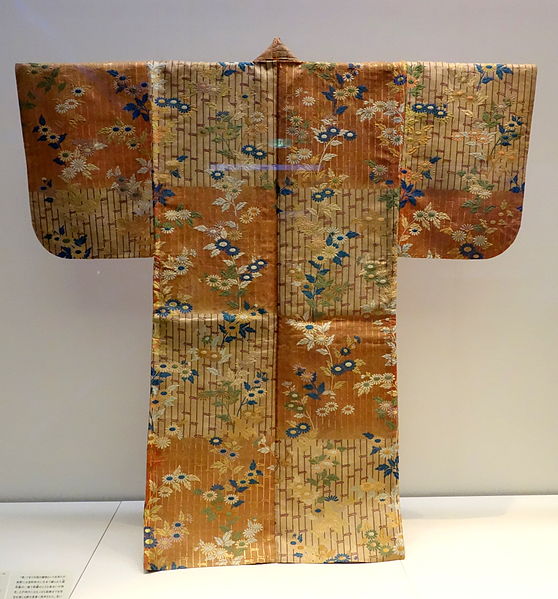Traditional Japanese theatre is among the oldest theatre traditions in the world. Traditional theatre includes Noh, a spiritual drama, and its comic accompaniment kyōgen; kabuki, a dance and music theatrical tradition; bunraku, puppetry; and yose, a spoken drama.
Noh is one of the four major types of Japanese theatre.
The July 1858 production of Shibaraku at the Ichimura-za theatre in Edo. Triptych woodblock print by Utagawa Toyokuni III.
Bunraku scene from Date Musume Koi no Higanoko (伊達娘恋緋鹿子) depicting Yaoya Oshichi climbing the tower
Rakugo, a form of yose
Noh is a major form of classical Japanese dance-drama that has been performed since the 14th century. Developed by Kan'ami and his son Zeami, it is the oldest major theater art that is still regularly performed today. Although the terms Noh and nōgaku are sometimes used interchangeably, nōgaku encompasses both Noh and kyōgen. Traditionally, a full nōgaku program included several Noh plays with comedic kyōgen plays in between; an abbreviated program of two Noh plays with one kyōgen piece has become common today. Optionally, the ritual performance Okina may be presented in the very beginning of nōgaku presentation.
Noh performance at Itsukushima Shrine
World's oldest Noh stage at Miyajima
Karaori garment, Edo period, 18th century, bamboo and chrysanthemum design on red and white checkered ground
Kanze Sakon [ja] (1895–1939), head (sōke) of Kanze school








![Kanze Sakon [ja] (1895–1939), head (sōke) of Kanze school](https://upload.wikimedia.org/wikipedia/commons/thumb/9/98/KANZE_Sakon_Ataka.jpg/640px-KANZE_Sakon_Ataka.jpg)